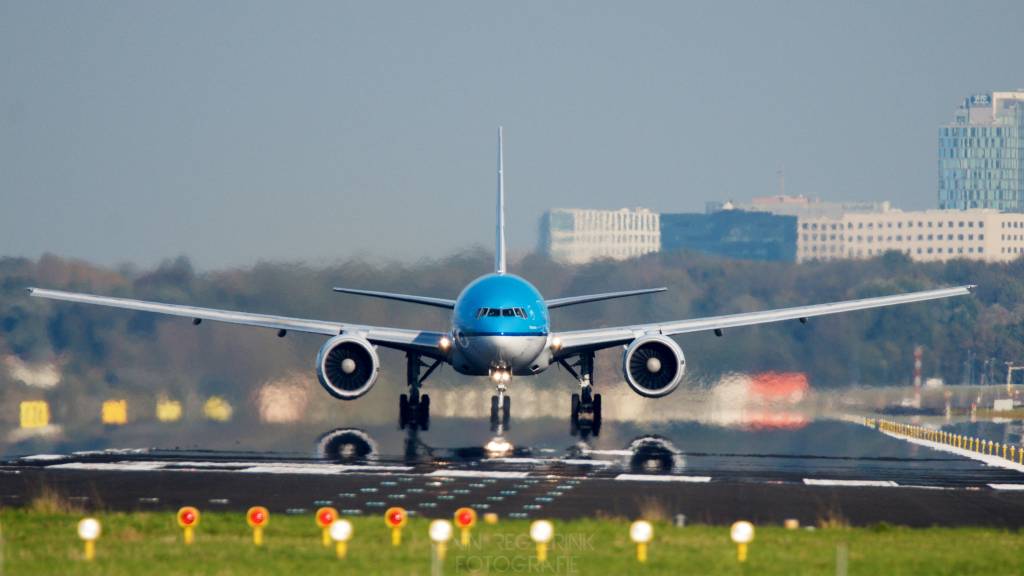q-online / Flickr / CC-by-nc-sa
NOS . News•
Schiphol Airport could be reduced to 250,000 flights per year without affecting access to the Netherlands. This is the opinion of a working group of local residents based on data that originates in part from the Ministry of Infrastructure and Water Management.
The new calculations were made by the Working Group on the Future of Aviation (WTL) in response to nitrogen problems around the airport. Schiphol, KLM, and the aviation sector are not at all concerned with the downturn.
Access under pressure
Currently, Schiphol does not comply with the nitrogen rules. To continue to exist, the airport needs a nature permit. To do this, nitrogen emissions must be significantly reduced. A difficult issue that raises great concern within the Council of Ministers, As NOS mentioned earlier.
WTL, founded more than ten years ago by concerned residents in the vicinity of Schiphol, assumes that aviation, like other sectors, must halve nitrogen emissions to obtain a nature permit. This means that Schiphol will have to reduce aircraft movements from 500,000 (takeoffs and landings) to 250,000.
The aviation sector argues that such a downturn is catastrophic for the accessibility of our country, which could cause serious damage to the economy. After all, with a smaller network, our country would be less attractive for setting up large companies.
Less destinations
The engineers of the Future of Aviation Working Group came to a different conclusion. The current network, with 330 direct destinations, is much larger than the Netherlands and needs a business climate, they say. The Ministry of Infrastructure and Water Management has selected approximately 180 destinations as of 2019 of commercial interest.
WTL states that the popular holiday resorts of Suriname and the Antilles must remain direct access. Taken together, this is already driving the number of flights well below the next maximum movement of 440,000 aircraft that Secretary Harpers wants to set.
WTL concludes from the coalition agreement that the destination network should primarily serve travelers to and from the domestic market in the Netherlands. However, on intercontinental flights, most passengers are carry-on passengers, who are taken to Schiphol on short flights from elsewhere in Europe.
By reducing the number of weekly flights at long-distance destinations, fewer transfers on intercontinental flights are needed to fill seats, and fewer European flights are required to operate. For example, according to WTL, Schiphol can manage just over 300,000 flights. Where it is still possible to reach all the specified destinations.
206 destinations are enough
In addition, 40,000 flights in Europe can be taken by express trains. Another 20,000 flights to specific business destinations that the Netherlands actually maintains with very little trade may also be cancelled. In this way, while maintaining easy access to the Netherlands for domestic market passengers, it reaches 206 direct destinations, 250,000 flights and 35 million passengers, mostly from or bound for the Netherlands.
“Fewer adapters are needed,” says WTL President Hans Burma. “Schiphol remains a smaller center with a large network. International transport in the Netherlands will not be affected.” Reducing the number of flights naturally limits not only nitrogen emissions, but also carbon dioxide emissions. It leads to particle reduction, disturbing noise and sleep disturbance.
Earlier this year WTL concluded That Schiphol could continue to exist with approximately 225 direct destinations and 350,000 flights, but that was without taking the nitrogen order into account. Representatives of population groups around the airport, nature and environmental organizations have approximately the same opinion.
Cabinet also to shrink Schiphol
Minister Harpers for Infrastructure and Water Management also believes Schiphol should shrink, but it doesn’t go that far. At the end of June, it was announced that Schiphol would be closed anyway by the middle of next year Back to 440,000 trips, just to reduce noise nuisance to local residents. “Schiphol can maintain the international network of destinations,” Harpers promised.
According to WTL, this is entirely possible with 250,000 flights. Burma believes that “the difference between 190,000 flights does not result in additional access, but provides an unnecessary number of transfers and very cheap city trips.” “The Netherlands will only face major disadvantages regarding environment, nature and climate. A missed opportunity to solve the sleep problem of adults and children around Schiphol with the nightly closing between 11pm and 7am..”
Aviation sector against deflation
KLM reacted with shock At the intention of Minister Harpers. The airline fears that the network will be compromised and vice versa: Dutch passengers already benefit from the large international network that the airline maintains.
According to Schiphol Airport, plans for the reduction lead to a great deal of uncertainty. Schiphol is not for growth for the sake of growth, but also not for shrinkage for the sake of shrinkage,” Schiphol said at the beginning of summer. The aviation sector announced that it will enter into consultations with the Council of Ministers.







